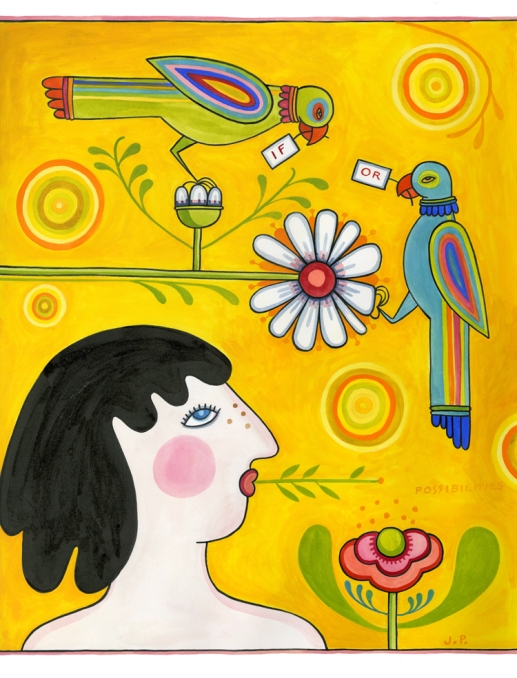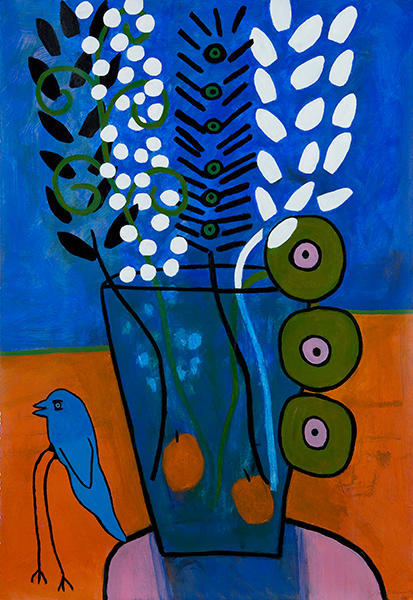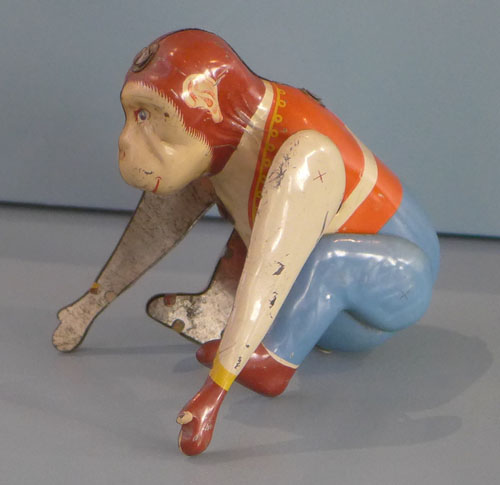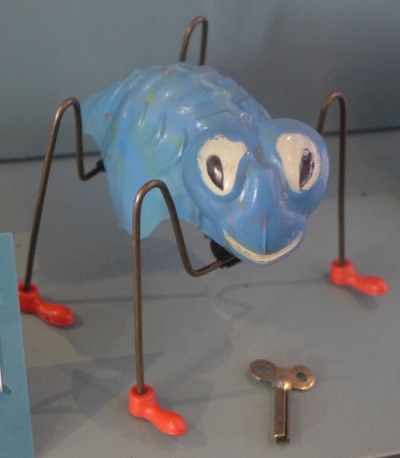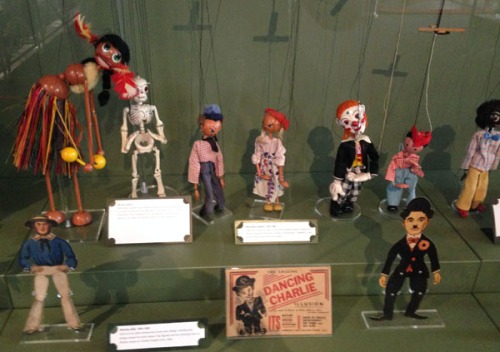Recently I found a tube of Cobalt Blue gouache and I swooned.
 I painted several blue paintings.
I painted several blue paintings.

Painting is always a matter of choosing one color to go next to another, and lately I’ve been carried away by the sheer pleasure of doing that.
Sometimes when I look at other people’s paintings I can feel the artist swooning from the pleasure of the colors. (Angel by Paul Klee).
This image by Borghese di Pietro Borghese was painted in 1448, and the pink still astounds. .
In Melissa Sweet’s illustration from Firefly July each shade of pink adds to the ones around it . The greens are gifts to the pinks and vice versa. .
Georgia O’Keeffe experienced synesthesia. She heard colors. This is a collage illustration from Through Georgia’s Eyes by Rachel Rodriguez. Rachel said that O’Keeffe walked through the hills, humming the colors she saw. .
Do you hear the reds in Margaret Chodos’s illustration for Buzz by Janet Wong?

The little red triangle says AHA to the orange and yellow/green in this paintingby Douglas Florian. .

Radio Lab has a podcast all about COLOR, rich in information. One fact: butterflies (and pigeons and lampreys) have pentachromacy and can see many more colors than people . .

In addition to the physical capacity to see a color (rods and cones etc.) your brain and your eye also need practice and coordination. When you learn a new language it takes time for your brain to learn the sounds that it hears. The same is true with visual perceptions. If you have never seen the color blue you will not be able to see it even if you have the physical ability to do so. Here is a landscape without blue, by Paul Klee- just lush oranges, reds and greens.

In Seattle right now there are blossoming trees, bushes and flowers everywhere- a profusion of color, light and shadow. Are humans hardwired for these colors and contrasts to give us joy? These cherry blossoms are from Maira Kalman.
This painting by Klee (below) is called Blossoming. .
The podcast used a choir to illustrate the harmony and depth of colors. The bass note of dark colors brings out the soprano yellow and white. Bright boats and buildings sparkle in the alto fog in this illustration by Melissa Sweet. .
Pink and green add harmony to the red and blue duet in this bouquet by Joe Max Emminger.
And finally here is a swooping, swooning, humming landscape from Matisse.
I hope you have a color full week.
p.s. I am having a show at the Bitters Co. Barn in Mt. Vernon, WA , opening on May 9th. Please come by if you are in the area.

